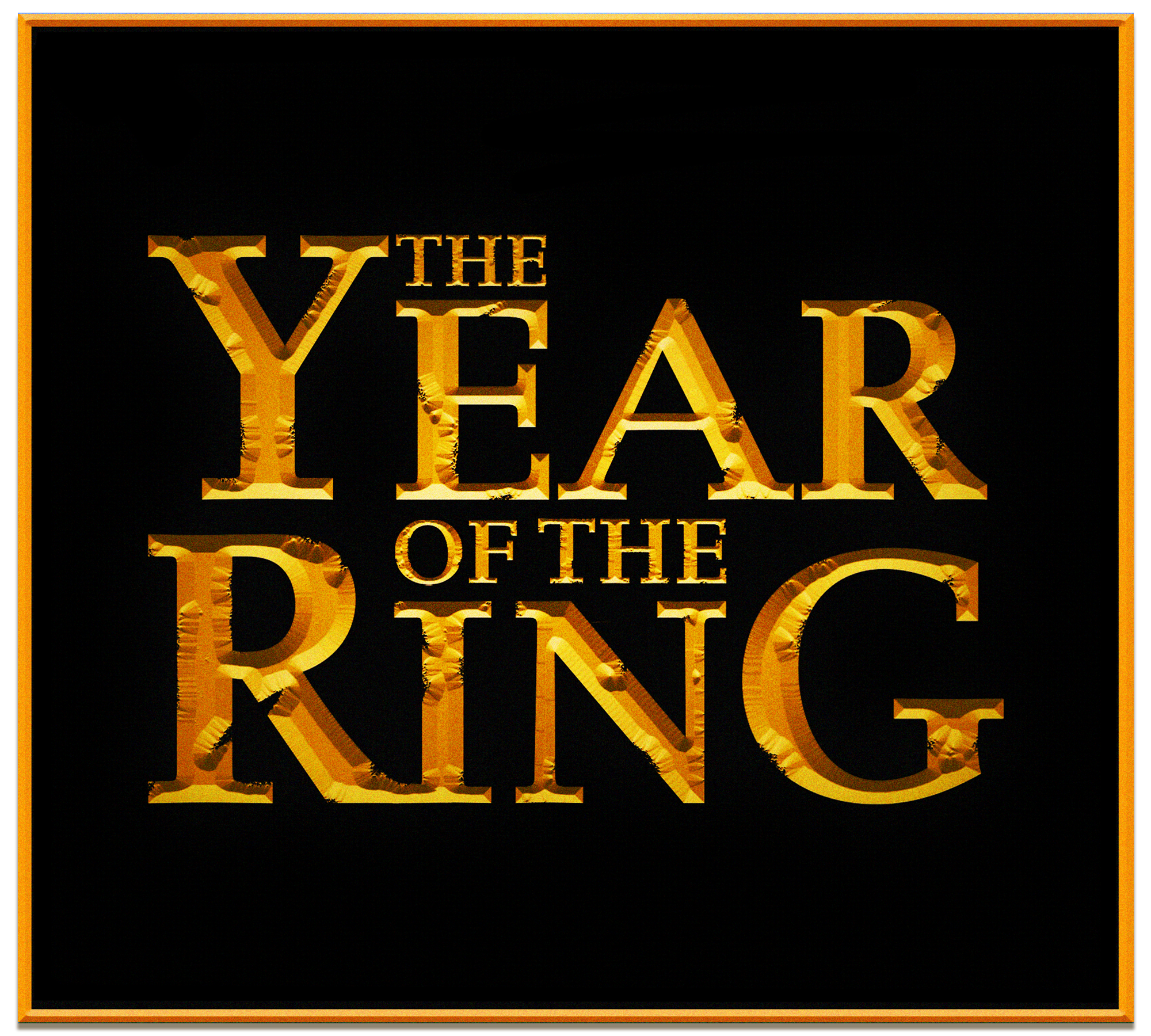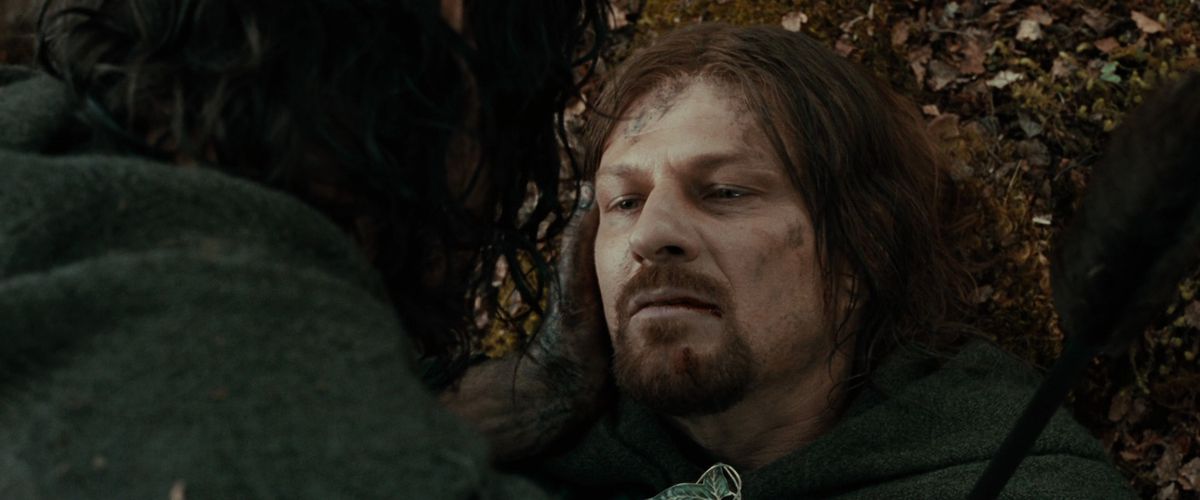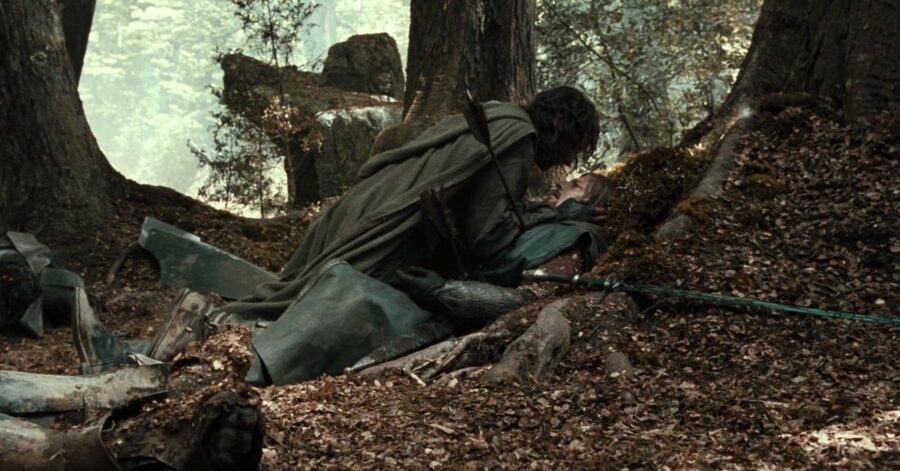It’s one of the most striking moments in The Lord of the Rings: The Fellowship of the Ring: Boromir, impaled by three enormous arrows, lies dying in the forest. When Aragorn finds him, Boromir sobs, confessing that he tried to take the Ring from Frodo, and that he fears the worst. Aragorn helps Boromir bring his sword to his chest, giving him the repose of a warrior slain in battle. And then, in an intimately framed shot, Aragorn cradles his fallen companion’s face, and kisses his brow.

2023 marks The Lord of the Rings movies’ 20th anniversary, and we couldn’t imagine exploring the trilogy in just one story. So each Wednesday throughout the year, we’ll go there and back again, examining how and why the films have endured as modern classics. This is Polygon’s Year of the Ring.
Boromir’s death sticks with viewers new and old, unforgettable in its performances and its deep wells of emotion. The first time I saw the scene in an enraptured midnight-premiere audience, I remember my surprise that no one laughed or quipped in embarrassment. It was gratifying, and shocking, to see that level of masculine tenderness depicted on screen, let alone in one of the biggest films of that decade.
It would have been easy, following the lead of other early 2000s blockbusters, for the Lord of the Rings trilogy to have catered to the times, and taken a turn for the self-aware, self-embarrassed, and glancingly-to-overtly homophobic. But with the quiet power of Boromir’s death scene, Jackson and company gave the hardened mainstream audience of 2001 a different idea of what masculinity could look like — an older idea. Drawing on a potent mix of Arthurian legend, Tolkien biography, and the onscreen mannerisms of the Golden Age of Hollywood, the filmmakers crafted one of the most heart-wrenching moments in the Lord of the Rings series. More than that, they delivered an expression of profound masculine vulnerability and, well, fellowship, that had become all but extinct in the surrounding big-budget landscape.
The making of an action hero
While there are many reasons for the shifts in masculine representation coming out of the 20th century, one seems the most glaring and obvious. A shadow and a threat to the mainstream had been growing in Hollywood’s mind for decades: homosexuality. As awareness of queer existence rose in the cishet public consciousness — owing in no small part to the AIDS crisis of the 1980s and 1990s, and the increasing visibility of queer activism — Hollywood became more and more skittish about representing closeness, physical touch, and emotional vulnerability between male characters.
The box-office-topping action movies from the years around Fellowship’s release — including the first installment of the Fast and the Furious franchise, the first of the Raimi Spider-Man films, and The Mummy Returns — give an overview of how adult masculinity existed in the popular consciousness. Masculinity meant male heroism, and the heroism of a solitary man. He might be the de facto leader of a team, but if he had equals, they were coded as antagonists, rivals, or at the very least, sources of gruff, in-group tension. The hero probably had a female love interest (likely to be the only top billed woman), but no close male friends with whom he shared his interior life, and certainly none who he’d touch for longer than a fist takes to make contact.
On its surface, the Lord of the Rings trilogy seems to fit the picture of what could sell to an early 2000s audience. In contrast to the fairytale meandering of The Hobbit, the Lord of the Rings series is very much a war story, and War Stories are traditionally full of the camaraderie and rivalries of men. But the movie trilogy, as a text, if not as a production, is as untethered from 2000s Hollywood concerns as New Zealand is from any mainland.
The hands of a king are the hands of a healer
In building an alternative Anglo mythos, Tolkien drew heavily on the imagery of masculinity as it exists in ancient and medieval sources. He also took conscious inspiration from his time as a soldier in World War I, embellishing the storybook knights and warriors of past ages with the friendship and close bonds he witnessed in real fields of battle. This fusion creates a complex update to a well-worn archetype, and as interpreted by Jackson & Co., gives us a variety of heroic types in Fellowship alone. But its Aragorn and Boromir adhere most closely to the blueprint of chivalric knight.
More than any other pair of masculine characters in the trilogy, the two are a study in contrasting equals. They’re both of the race of Men, and experienced warriors. Aragorn is the soulful, poetic knight, valiant but melancholy, respectful of history, gallant and chaste with women. Boromir looks the part, laden with the props of a Round Table champion, and is more brazen, propelled by the knightly desire to protect his homeland. Both are suspicious of the other. The quality in question is not whether the other is a man, but whether he is noble and worthy enough to be the leader of Gondor, the figurehead nation of Men.

From their first, tense introduction in Fellowship, Boromir and Aragorn are reflections of each other, reflections that contain valor as well as darkness. Aragorn, an outsider raised by elves, doubts he should assume his kingly birthright, while Boromir’s princely confidence and pride in his homeland make him prey to the Ring’s promises. In their own ways, they are seeking a redemption that only the other can understand, and give. But in order to receive it — and for Boromir’s death to be cinematically effective — they must first have bared their flaws to the other. Aragorn and Boromir have to be physically and emotionally close, without the self-reflexive flinching their audience might expect.
The legacy of the War Film
Whether it was deliberate planning, or unconscious association by Jackson and his collaborators, much of The Lord of the Rings echoes the same onscreen language as Golden Age Hollywood — where masculinity is gentler, but its credentials unimpeachable. The classic War Picture is a direct ancestor to the framing, sincerity, and unashamed touchingness of Boromir’s death scene, and others like it. It’s a cinematic invocation that lets the films bridge the gap between early-2000s audience expectations and Tolkien’s more archaic references and tastes. By signaling that what’s being shown is part of the cinematic and literary past, the film provides space for an audience to engage with the scene on its own terms, not 2001’s.
It was in this breathing space that an audience was able to take in the scene’s many layers and lessons. Eminently flawed, but noble, masculine characters in the LOTR trilogy are known by their actions toward others. Tenderness is an action, the scene seems to say. Forgiveness is an action.

Image: New Line Cinema
The Lord of the Rings trilogy resolves the rivalry between its two classically masculine members of the Fellowship not through manly contest, but through careful reveal of their mirrored doubts, worries, and fears for the future. To truly be a hero — to be a man, the movie says — you cannot bear your burdens in the poisonous cloud of solitude. That’s how the Ring seizes you. You must be brave enough to share your doubts, to hold each other close, to see and be seen in turn.
Grasping Boromir’s hand as he dies, Aragorn takes his first real step toward claiming his birthright: “I swear to you, I will not let the White City fall.” With a look not unlike relief, Boromir responds in affirmation, “I would have followed you, my brother. My captain. My king.” This simple declaration says it all: I accept you, I recognize you in turn, thank you.
You are not alone.
Polygon – All
Source link
Related Post:
- The history of Boromir’s Walk to Mordor meme is Lord of the Rings magic
- Lord of the Rings movies broke the nerd culture wall for Marvel
- The Lord of the Rings: Gollum Is Still a Long Way Away on PS5, PS4
- Amazon Lord of the Rings show gets 2024 premiere date, first image
- Where Lord of the Rings elves really go when they die
- Lord of the Rings reinvented Tolkien’s story by adding Aragorn’s horse
- Lord of the Rings: The Two Towers is quietly one of the best movie sequels ever
- Magic: the Gathering crossing over with Fortnite, Street Fighter, Lord of the Rings, and more
- The first note in the Lord of the Rings score has an ancient history
- George RR Martin compares Elden Ring’s world to Lord of the Rings and Conan
